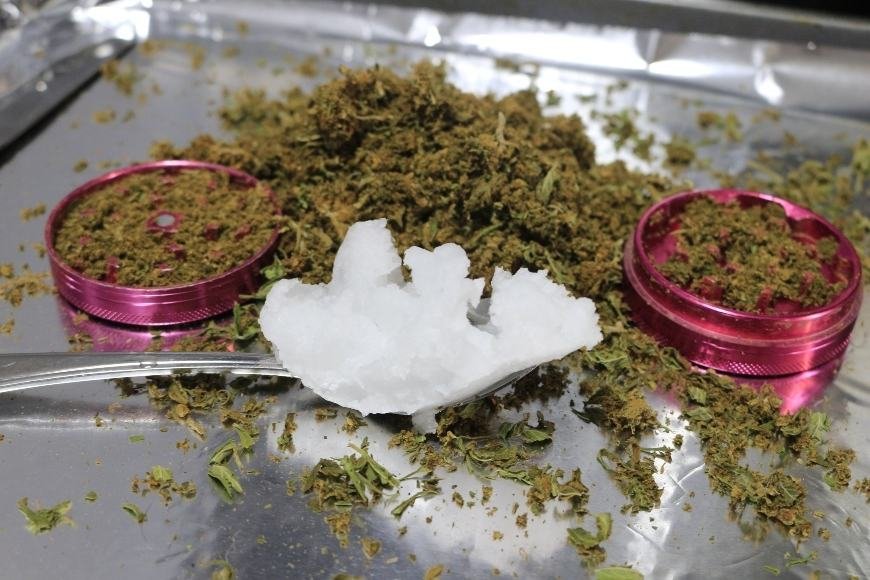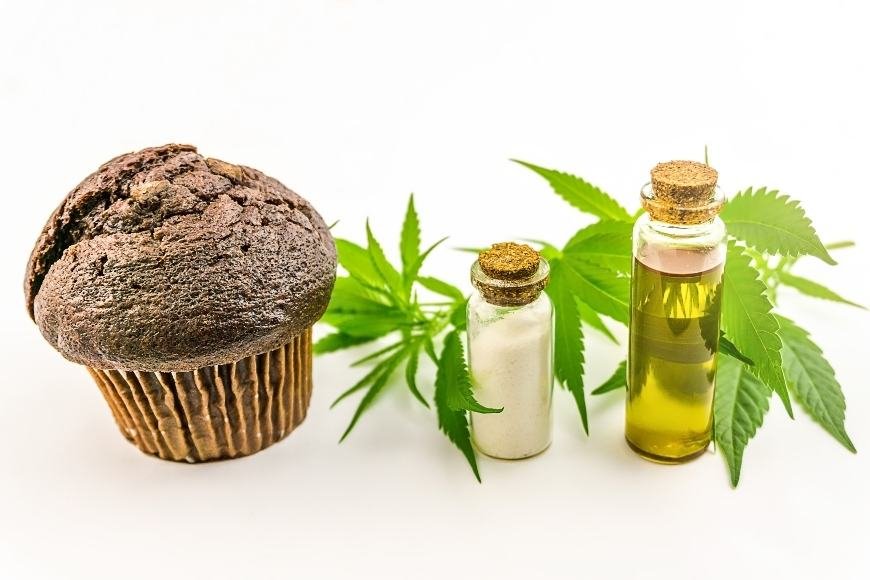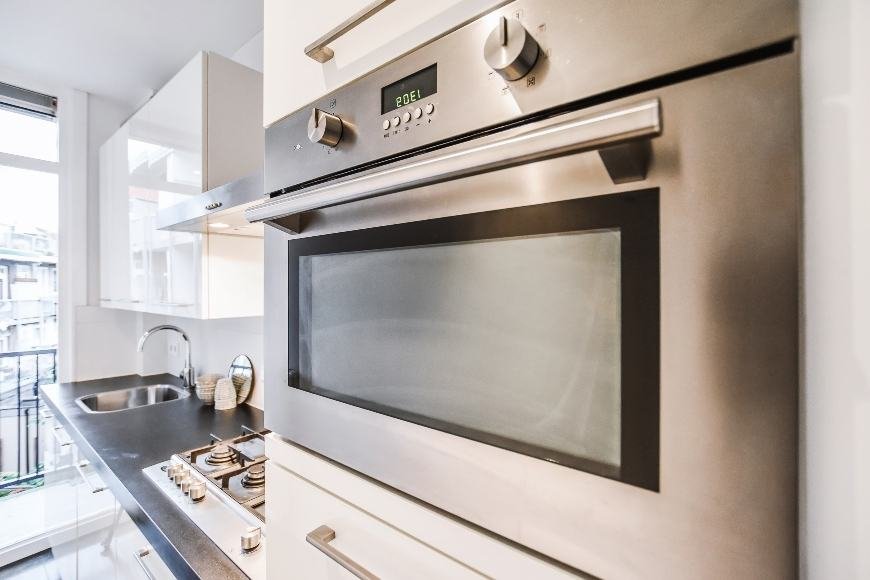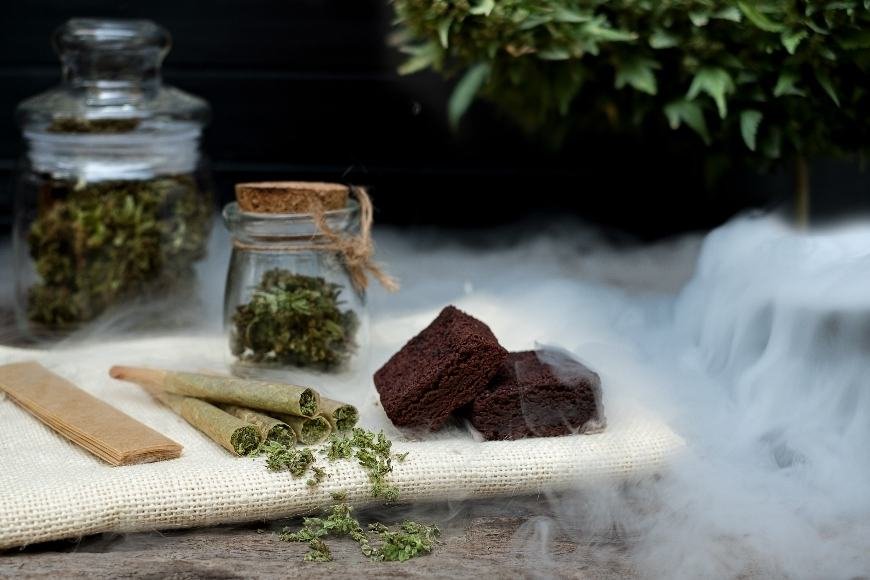Decarboxylating Cannabis
Learn how to maximize THC and therapeutic effects of cannabis flower by understanding the process of cannabis decarboxylation. Read our tips and tricks now!

In this blog post, we will explore how to preserve the therapeutic effects of cannabis flower by converting neutral cannabinoids such as cannabidiolic acid (CBDA) into more potent compounds like CBD, while also preserving other beneficial cannabinoids and terpenes through decarboxylation.
We will look at the different approaches to decarboxylation, a process that changes CBDA into CBD by taking away a carboxyl group from its molecular structure. We will also delve into factors that affect decarboxylation efficiency, including temperature and time. By understanding these variables, you can optimize your final product's potency and therapeutic benefits.
Furthermore, we will examine the role of terpenes in enhancing cannabis' therapeutic effects. Terpenes are aromatic compounds that give each strain its unique flavor profile and have been shown to work synergistically with cannabinoids to produce various health benefits.
In conclusion, this blog post aims to provide valuable insights on how to maximize THC levels while preserving neutral cannabinoids and terpenes for optimal medicinal value.
Table of Contents:
- What is Decarboxylation?
- Why Decarboxylate Cannabis?
- How to Decarboxylate Cannabis?
- What Can You Do with Decarboxylated Cannabis?
- Decarboxylation Tips & Tricks
- FAQs in Relation to Cannabis Decarboxylation
- Conclusion
What is Decarboxylation?

Removing a carboxyl group from an organic compound, typically resulting in the release of carbon dioxide (CO2), is known as decarboxylation. This process is essential for cannabis consumption as it activates cannabinoids like THC and CBD. Without decarboxylation, these compounds remain inactive and won’t produce their desired effects.
The most common method of decarboxylating cannabis is through heating or baking. When heated at temperatures between 220°F to 250°F, the THCA molecule loses its carboxylic acid group and converts into THC - resulting in psychoactive effects when consumed. Decarbing can also be done with high-proof alcohols such as Everclear or vodka by infusing them with raw flower material; however this method takes much longer than traditional methods due to a slower reaction rate.
Another way to activate your buds without using heat is through UV light exposure, but this will take significantly more time than traditional methods – anywhere from 4-12 hours depending on how powerful your UV light source is. Additionally, you can use microwaves for quick decarb sessions if you don't have access to an oven or stovetop - just make sure not to overheat your material.
When making edibles out of cannabis flowers, it’s important that you always decarb first before adding any other ingredients so that all active compounds are activated properly and evenly distributed throughout the recipe. The same goes for tinctures: if you're looking for maximum potency then make sure your starting material has been fully decarbed beforehand. It's also important to note that some terpenes may be lost during the process so keep an eye on temperature levels while cooking/baking/microwaving etc., as too high could lead to degradation of those precious aromatic oils we all love so much.
Decarbing isn't just limited to marijuana either; many psychedelics such as magic mushrooms must also go through a similar process in order for them to become active when ingested orally (as opposed to smoking/vaping). In general though, regardless of what substance you're working with – whether it be weed or shrooms – remember that proper decarbonization should always come first before consuming anything else. It is important to note that some terpenes may be lost during the process so keep an eye on temperature levels while cooking/baking/microwaving etc., as too high could lead to degradation of those precious aromatic oils we all love so much.
Decarboxylation is an essential step in the process of preparing cannabis for consumption, as it activates many of its beneficial compounds. By grasping the rationale and approach for decarboxylating your cannabis, you can make sure that you are getting maximum efficacy from it. Now let's explore why we should be decarboxylating our cannabis.
Why Decarboxylate Cannabis?
Decarboxylation is the process of heating cannabis to activate its psychoactive properties. It’s an essential step for anyone wanting to get the most out of their weed, whether it’s for recreational or medicinal purposes.
Cannabis contains two main cannabinoids:
tetrahydrocannabinol (THC) and cannabidiol (CBD). In their natural form, these compounds are non-psychoactive; they won't produce any mind-altering effects until they're exposed to heat. Decarboxylation activates THC and CBD so that users can experience the full range of effects associated with marijuana consumption.
The benefits of decarbing go beyond just getting high—it also unlocks a range of therapeutic potentials as well. Research has demonstrated that the activation of THC and CBD can provide therapeutic benefits for a variety of ailments, including chronic pain, inflammation, anxiety, depression and epilepsy. For medical marijuana patients who need precise dosing in order to manage their symptoms effectively, decarboxylating cannabis beforehand is essential in order to ensure accurate dosage levels.
For those looking for an extra potent experience from their weed without having to consume large amounts at once, decarb can be incredibly helpful here too. When done correctly, it significantly increases the potency level, which means users will feel stronger effects from smaller doses—perfect for microdosing enthusiasts.
It's important to note that not all forms of cannabis require decarb before use; pre-rolled joints or blunts don't need this step since smoking already provides enough heat activation on its own. However, if you plan on making edibles like brownies or butter then it is highly recommended that you take this step first, otherwise your finished product may not turn out as expected due to the lack of proper activation levels present in raw bud form alone.
Decarbing cannabis is a critical measure to ensure you get the most out of your marijuana, thus it's essential that one comprehends why and how to do so. To make sure you are properly decarbing your bud, let's dive into the details on how to decarboxylate cannabis.
How to Decarboxylate Cannabis?

Decarboxylation is an essential step in the process of consuming cannabis and unlocking its full potential. This technique triggers the cannabinoids THC, CBD, and others to be bioavailable for either therapeutic or recreational utilization. Here’s a guide on how to decarboxylate cannabis properly so you can get the most out of your bud.
Temperature Guide:
Decarboxylating cannabis requires temperatures between 220°F-250°F (104°C-121°C). The best temperature for triggering THC is 110°C (230°F), while the most suitable activation heat for CBD is 121°C (250°F). Maintaining an appropriate temperature is essential to prevent degradation of some cannabinoids during decarboxylation; finding the correct equilibrium is key.
How to:
To start decarboxylating your cannabis you'll need parchment paper, baking sheet/pan, oven mitts or heat resistant gloves and an oven thermometer if available. You'll also need ground up buds from a high quality strain with high levels of both THC and CBD as well as terpenes intact.
Once all materials have been gathered, preheat the oven to a temperature between 220 - 250 degrees Fahrenheit (depending on desired cannabinoid profile). Place parchment paper over a baking sheet/pan and evenly spread out ground up buds across it; making sure there is not too much overlap among pieces as this could lead to uneven heating during cooking time. Bake for 25 minutes at the selected temperature setting, checking every 5 minutes after 15 minutes have elapsed using oven mitts or heat resistant gloves; stirring lightly if needed until desired level of crispiness is achieved without burning material being cooked inside pan. Then switch off the heat source and allow material to cool down naturally before transferring into storage container such as glass jar once cooled completely ensuring an air tight seal upon closing lid each time stored away safely away from children or pets. Keywords: decarboxylate cannabis, cannabinoids, THC, CBD, terpenes, parchment paper, baking sheet/pan
Decarb Tips & Tricks:
For best results, try grinding buds finely prior to placing onto parchment paper since this helps ensure even heating throughout the entire surface area covered during cook time leading to a consistent end product no matter what method is chosen afterwards. Additionally, keep a close eye on temperature settings dialed correctly as overcooking will result in a burnt taste along with decreased potency levels due to degradation of certain compounds present within plant matter itself. For optimal preservation, leftovers should be stored in an airtight container.
What Can You Do with Decarboxylated Cannabis?

Decarboxylation is an important process for cannabis flower and other plant material that contains cannabinoids. It activates the neutral cannabinoids, such as cannabidiolic acid (CBDA) into their active forms, like CBD or THC.
Edibles are a well-liked option for taking in decarboxylated cannabis. You can add it to almost any food or drink recipe you’d like. Cannabutter is an easy way to get started - simply mix your decarbed bud with butter over low heat until melted together then strain out any remaining plant material before adding it to whatever you’re cooking up. From brownies to gummies and even salads, there are endless possibilities when making edibles with decarbed bud.
Tinctures offer another great option for those looking for a quick hit of relief from their medicine without having to smoke or vape anything. Simply combine your decarbed buds with alcohol over low heat until all the cannabinoids have been extracted from the plant matter into liquid form - this can be done in as little as 30 minutes depending on how much potency you want in your final product. Strain out any leftover solids before using your tincture however you see fit - under tongue drops work great here.
Topicals are also a viable option when working with decarb cannabis flower; they provide localized relief without getting users high since they don't enter into circulation through digestion or inhalation like other methods do. Salves and balms made by combining coconut oil (or another carrier oil) with your activated buds make excellent topical treatments that can be applied directly onto skin for targeted pain relief.
Decarboxylation Tips & Tricks
Activating the psychoactive compounds in cannabis, such as THC and CBD, is accomplished through a process known as decarboxylation. Here are some tips and tricks to ensure successful decarboxylation:
Temperature Control:
Temperature control is key when it comes to decarboxylating cannabis. The ideal heat for decarboxylating cannabis is approximately 230°F (110°C). If the temperature gets too high, it can cause degradation of terpenes and cannabinoids, resulting in an inferior end product. To ensure consistent temperatures throughout the entire process, use an oven thermometer to monitor progress during baking.
Time Matters:
Timing also plays a role in successful decarboxylation. Generally speaking, 45 minutes at 230°F should do the trick; however, depending on how much plant material you’re using and its moisture content, this time may vary slightly up or down by 5-10 minutes. Make sure to keep an eye on things while they’re baking so you don’t overdo it.
FAQs in Relation to Cannabis Decarboxylation
Is cannabis decarboxylation necessary?
Yes, cannabis decarboxylation is necessary for the cannabinoids to be activated and available for consumption. Decarboxylation is the process of heating cannabis at a specific temperature range (220-235°F) to convert THCA into THC, unlocking its potential effects and releasing other compounds like terpenes for added flavor and aroma. This process also releases other compounds like terpenes that enhance flavor and aroma. Without decarboxylation, the potential effects of cannabis cannot be realized.
What is the best cannabis decarboxylation method?
Heating cannabis in an oven at around 240°F (115°C) for 30-40 minutes is the most effective way to decarboxylate it and activate its THC, CBD, and other cannabinoids. This will activate the THC, CBD and other cannabinoids present in your material. It is essential to be aware that temperatures exceeding the suggested amount may damage some elements, so it's preferable to remain within the given parameters. Additionally, using an airtight container such as a mason jar with parchment paper can help ensure even heating throughout your product.
Does decarboxylation make cannabinoids more potent?
Yes, decarboxylation does make cannabinoids more potent. When cannabis is exposed to heat during decarboxylation, it triggers the potency of THC and CBD molecules in the plant material. This increases their bioavailability when consumed or applied topically, making them more effective for medical and recreational use. Decarboxylation also allows other compounds like terpenes to become activated as well which can enhance flavor and aroma profiles while providing additional therapeutic benefits.
Conclusion
It unlocks its potential and provides a variety of options for recreational users, from smoking to edibles. Grasping the fundamentals of decarboxylation, why it matters and how to execute it accurately are all critical for getting the most out of your cannabis experience. So if you're looking to maximize your enjoyment with marijuana, remember that successful cannabis decarboxylation is key.






































































































































